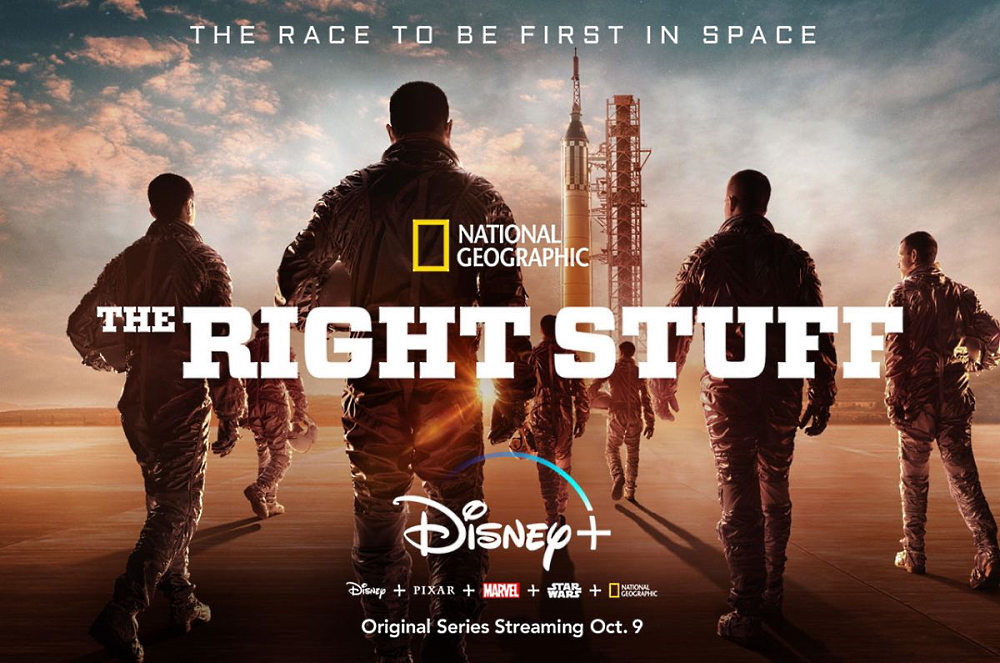
Movie poster
It's hard to say if the retelling of what is happening on the screen can be called spoilers, but, just in case, you were warned.
Introduction
The series warns that it is based on historical events, but some of the characters and scenes were created or altered for dramatization purposes, and in general does bring the storylines close to what took place in reality. Despite the fact that The Right Stuff is a fictionalized story, the dawn of American astronautics is well documented, and astronauts and MCC staff have left their memoirs in a lot. Throughout this post, I will also frequently cite the excellent collection of changes and inconsistencies from CollectSpace .
Episode 1
The series begins with a teaser from the season finale - the first astronaut prepares for his flight in May 1961. The action then moves back to 1959. This is where the biggest inconsistency with the book turns out - Tom Wolfe talks a lot and at length about the test pilots, especially about Chuck Yeager, the first person to overcome the speed of sound. Due to the fact that this is not in the series at all, the viewer may remain at a loss as to what kind of title “right stuff” is the “right dough” that test pilots are made of, what are the features of their profession. The death of a fictional colleague and friend of the future astronaut Gordon Cooper is shown rather briefly and indistinctly, which can also be seen as an allusion to the 1983 film.
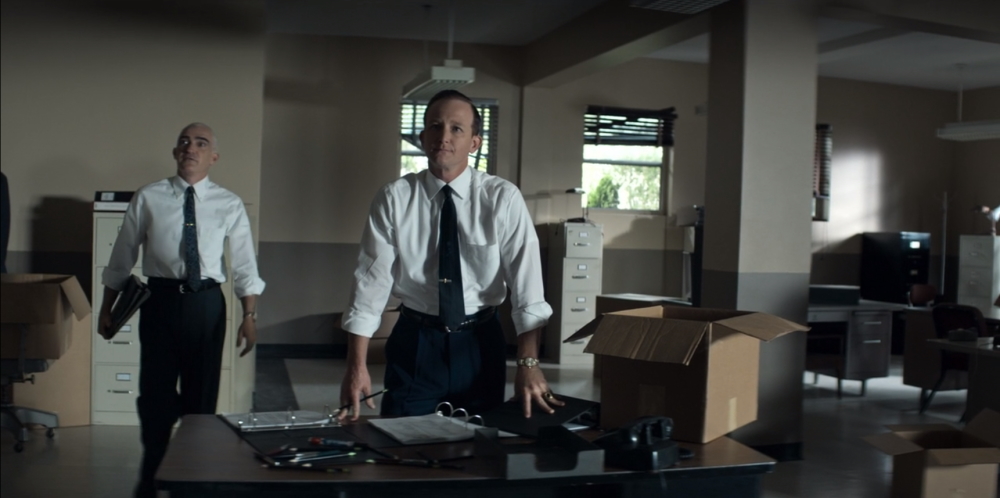
Left Robert Gilruth, first director of the Manned Space Center (now Johnson), right Chris Craft, first flight director
In the series, Gilruth, Kraft, and Glynn Lanny make up the initial roster of astronaut candidates. In reality, by the willful decision of President Eisenhower, test pilots were selected for the astronauts, 110 were selected, two-thirds of them were invited to the preliminary screening, and Gilrut participated only in the selection of the final seven. Sadly, in the 1983 film, this story is told in more detail, despite the shorter screen time.
A separate small gag is that Kraft's actor Eric Loden in another series, "For All Mankind", played by Gene Krantz, who was Kraft's immediate subordinate.
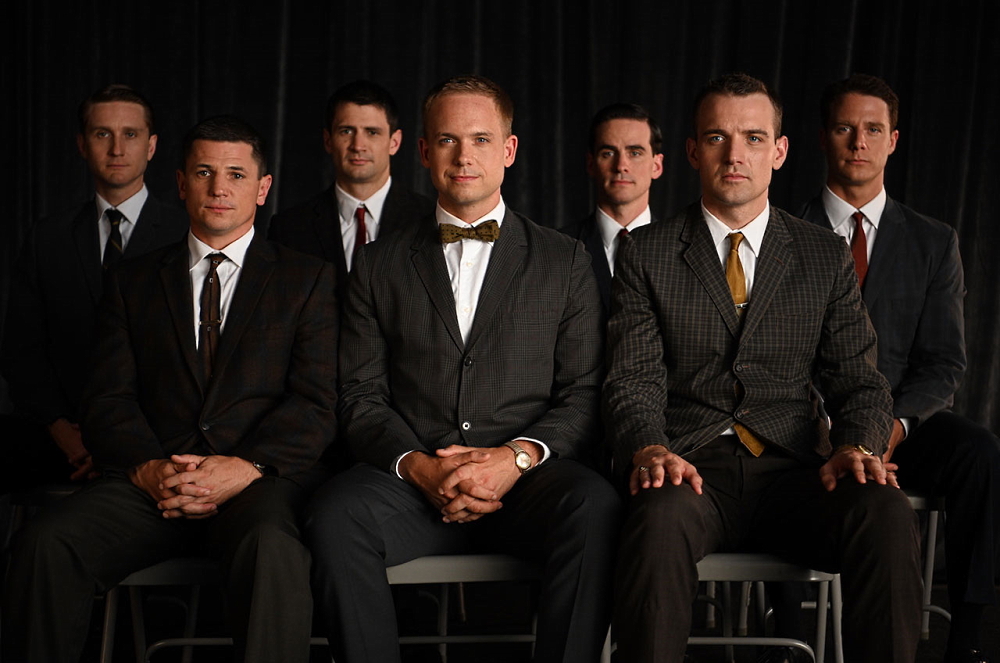
Try to guess who is playing whom
The first season also solves the problem of introducing the viewer to the characters. Personally, in my opinion, the choice of actors is unfortunate. In the first few episodes, only Glenn can be distinguished, and despite the fact that the age of the actor roughly corresponds to the real age of the astronaut, it seems that the actor is much younger. The rest of the characters merge into one face. Another stylistic incongruity arises when we are shown the naked torso of one of the astronauts, chiseled by fitness to a state unimaginable in the middle of the last century. The astronauts, of course, had athletic figures, but not so perfect.
The abundance of screen time allows, in theory, to show some scenes in more detail, but these hopes are rarely justified. For example, scenes of medical check-ups are shown both rather briefly and without humor in the 1983 film.

Three main astronaut characters, from left to right John Glenn, Alan Shepard, Gordo Cooper
Episode 2
The second episode focuses on the sudden press attention, for which not everyone was ready, the bonuses from the astronaut's life and the necessary PR travel. Indeed, Glenn already had experience with the press, thanks to his non-stop flight from coast to coast of the United States. A curious coincidence - the American analogue of Guess the Tune, in which Glenn took part, was on TV on October 4, 1957.
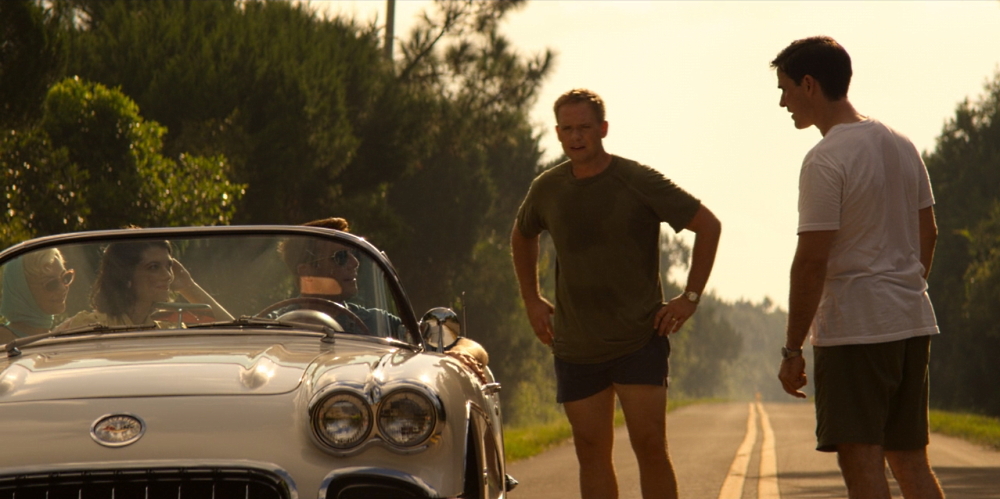
Enjoying the life of an astronaut vs physical education
Here the main and, it seems, the only conflict of the entire season between Shepard, enjoying life, and Glenn, a teetotaler, a deacon (in the Presbyterian church, a layman can hold this position) and the right one to yawn, begins to peck. Any person is deep, and it is very sad that in the series the astronauts were squeezed into some one-dimensional characters. The journalist Barbry called the same Shepard the smartest of the seven, and Wolfe mentioned his two "modes" - "Ice Commander" / "Smiling Al". Cooper is shown to be strikingly unsure of himself, and the rest of the astronauts do not really show the characters.
In general, what is happening on the screen is correct. DeOrsy did arrange an exclusive contract with Life magazine, according to which astronauts received several times more than their rather average salary. The astronauts did spend their time at the Starlight Motel. And Shepard, Cooper, Grissom and Slayton took advantage of the $ 1 sporting Corvette lease offer. The series is not shown, but Wolfe wrote that Glenn was the only astronaut who drove not in a sports car, but in a family sob.
Episode 3
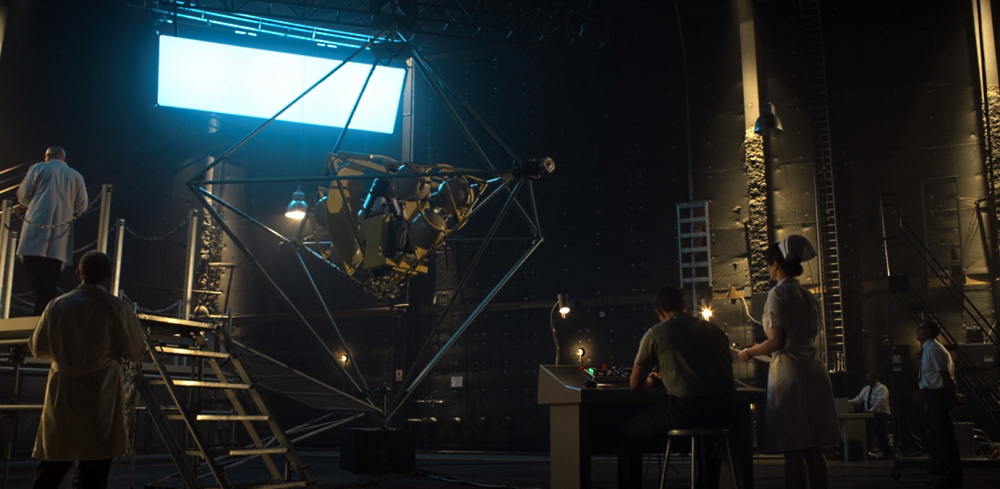
The third episode begins with the training of the MCC team and goes on to train the astronauts. MASTIF is a completely real simulator, very closely shown in the series, but the story with Shepard is dramatized without any measure. First of all, Alan Shepard will really start to experience dizziness up to loss of consciousness, but this will happen later, in 1963. He is diagnosed with Meniere's disease, suspended from flights, and then, after an experimental operation, he will return to the squad and even flies to the moon on Apollo -14". In the series, we are shown a state incompatible with flights, which the hero hides. In reality, Shepard felt nauseous from MASTIF, but it cannot be clearly attributed to a future illness - most people would feel bad in this simulator. The real Shepard with no night training became the first astronautperfectly mastered the simulator.
An interesting fact, not personally known to me, was that Glenn actually played the trumpet. This, incidentally, may explain his success in the exhalation test from the 1983 movie, where only Carpenter, who was diving, showed the best result.
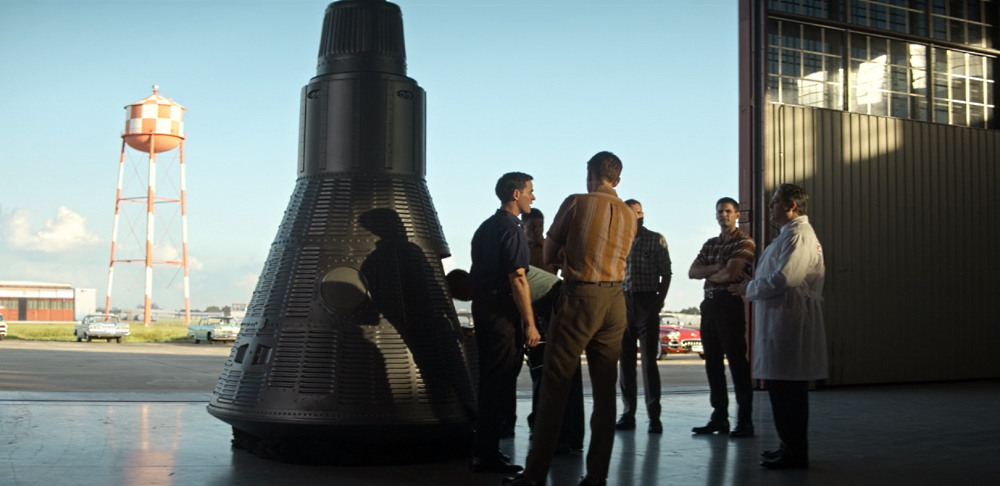
The episode showing the ship and "where is the window?" looks like a clear borrowing from the 1983 movie. And, unfortunately, the series does not use its capabilities and resources here. In reality, the astronauts were assigned according to the program and participated both in organizing the instruments in the cockpit and, for example, in shaping the search and evacuation procedures after splashdown. The show shows us that Mercury was designed with minimal control over astronauts, which is no longer true. For example, Shepard on the first flight, despite his very short duration , fully experienced manual control.
The story of the accident "Mercury-Atlas 1" is dramatized. In a real launch, the rocket disappeared into the clouds after 30 seconds and collapsed at the 58th. But NASA had enough exploding rockets to scare the wives and children of astronauts. And on the screen in the MCC you can see a really very impressive falling engine from the Atlas-Centauri accident on March 8, 1962, which can also be seen, for example, in the Koyaaniskatsi finale .
Episode 4
The fourth episode compresses several events in the area of Christmas 1960. The real Luna-3 took photographs of the far side of the moon on October 7, 1959, and the photograph was published in Pravda on October 27, 1959. The Mercury-Redstone 1 mishap occurred on November 21, 1960.
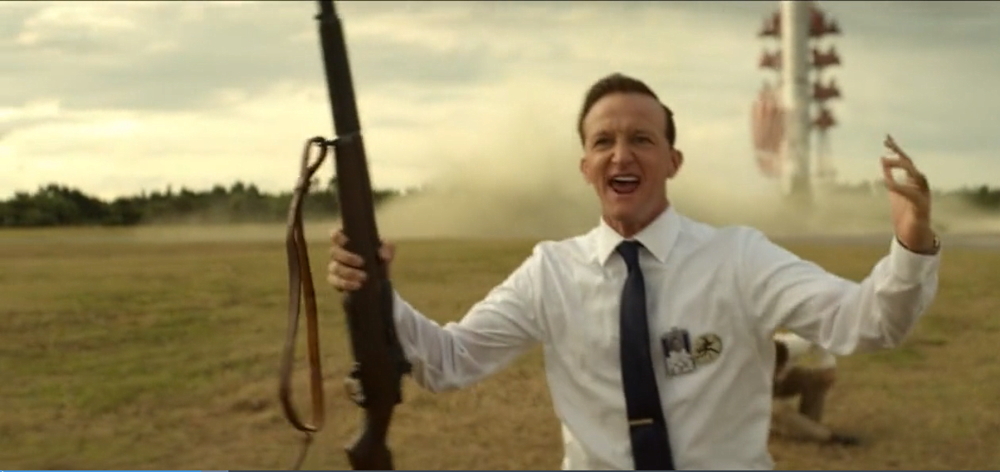
The rocket-fired story is grounded in reality, but over-dramatized beyond measure. I love to tell this story (you can read more about it here ), and it is really funny, but in reality the idea of "let's shoot a rocket to relieve the pressure" was proposed, discussed and rejected, without jeep racing for a man with a rifle.
Wernher von Braun appears on the screen, depicted, in my opinion, as some kind of clown. Kraft really did not like him, but more because of engineering jealousy than because von Braun was a Nazi.
Around this episode, I began to ask myself - what is wrong? Why are you being told a familiar and beloved story, but you look through force? I can only assume that this feeling arose due to the protracted narrative and the presence of completely optional plot lines.
But the dialogue between Craft and Slayton is one of the most enjoyable episodes of the series. Indeed, Kraft burned his hands in childhood, and Slayton lost part of his finger, the only one that could be lost, and not lose the opportunity to become a pilot. Few people know about this, but it is a fact - the first seven astronauts in the United States included a person with an incomplete number of fingers on his hands.
Episode 5
The fifth episode acquaints the viewer with a group of women who want to become astronauts (in the end they did not succeed, alas) and goes into the intrigues of astronauts.
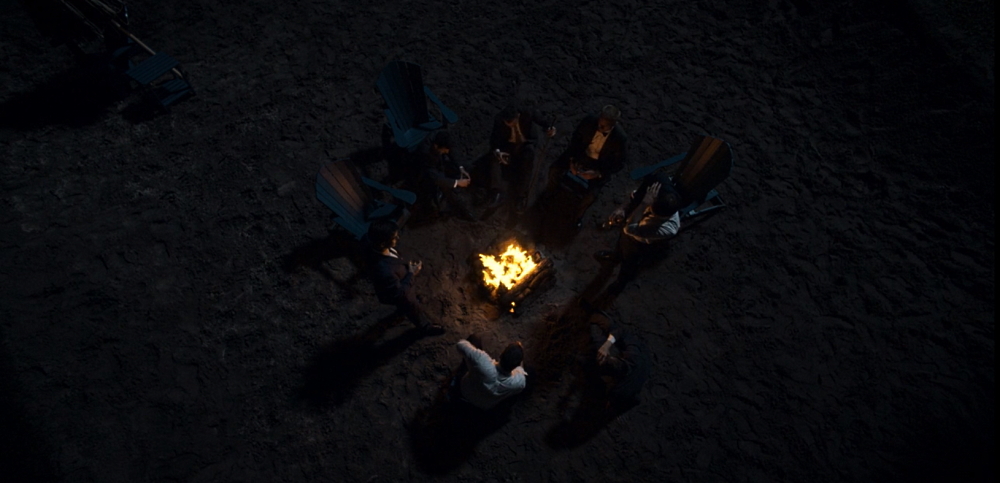
A session of group psychotherapy of astronauts A
really cool story, showing, for a change, Glenn as a modest hero (and not an unpleasant intriguer) did happen, albeit with minor deviations. Glenn returned in another plane to the emergency landing site of downed comrade John C. Giraudo, but the North Koreans had already captured him. But the story with Cooper and Grissom was greatly changed - the plane fell on takeoff, they almost died, but Cooper's fault was not in this.
Shepard, who was caught with the girl, was in reality, but then the story was turned upside down - it was not Glenn who called NASA PR specialist Shorty Powers, but vice versa. The name "caught" was hidden for a long time, and the fact that it was Shepard became known after his death, in 2004. Then only plot showdowns begin, Glenn looks like a complete bastard, and naturally gets a low place in the voting. In reality, there was a vote, the forms were destroyed, and how much it influenced the decision is unknown. Later, some told their choice: Glenn and Carpenter voted for each other, Shirra chose Shepard, and Cooper chose Grissom.
Another unpleasant plot point - the conversation between Cooper's wife and her husband about the women's squad occurs after reconciliation, which shows her as a calculating and soulless woman.
Episode 6
The denouement seems to be close, but now bureaucrats are in the way, new delays arise, and intrigues only increase.

The scene of the tests of leaving the ship in the motel pool reminded me of the "Country of Crimson Clouds", where a special suit (spacesuit) was tested right in the director's office. In reality, of course, these tests were carried out in the Langley Center, in a special hydrodynamic basin with simulated waves and other difficulties. And the inflatable bags that were not on the Mercury were on the Apollo, and this scene may have been inspired by the Apollo-era training at the Ellington base.
Curious is the difference between the motivations of the real and serial Wisner from the commission. Historical Wisner wrote in his report "an urgent program to send a man into orbit as quickly as possible cannot be justified on technical or scientific grounds." Although, of course, everyone understood that a manned flight disaster would be a huge blow to the country's prestige.
The real Glenn wrote a harsh letter of protest over the choice of Shepard first, but in one copy and only to Gilruth. The deviations from the story make Glenn especially unpleasant. In general, around here I thought that there are practically no cute characters in the series - astronauts intrigue, swear, stagger about their mistresses. It is not plainly shown how much labor and energy they devote to their work. Only perhaps Glenn's wife is sympathetic. And why all this is also becoming unclear. Just to be the first? The 1983 book and film speaks well of people who take cars beyond the limits of acceptable modes and then come back. Here this pathos is not noticeable at all.
The flight of the Mercury-Redstone 2 is shown realistically, there really were serious problems, but the monkey remained alive and well. In reality, Shepard's flight was delayed not so much by a monkey as by a test flight to check the improvements after a not quite normal monkey flight. The unmanned launch of the Mercury-Redstone BD (Booster Development, carrier revision) took place on March 24, 1961.
Slayton was deprived of hope of flying due to arrhythmia later shown on the series in 1962.
But the phrase "We are all asleep here" in response to the press call at night with a message about Gagarin's flight is completely historical.
Episode 7

Shepard to Glenn: "Admit it, you would like me to jump, crash, and you become the first in line to fly."
The first flight is getting closer, and the tension continues to build. Finally, the press will find out who was appointed first. True, in reality it was learned by journalists who had not leaked into the territory - NASA officially announced the names of the main and backup astronauts after the cancellation of the launch attempt on May 2, 1961. The real Shepard also did not go for a walk on the hangar roof, but ran along the beach not far from the launch pad, reread flight procedures and naps. Let us leave fantasies with a showdown on the roof on the conscience of the filmmakers; according to their memoirs, the astronauts have already come to terms with the sequence of flights and helped Shepard.
Carpenter was indeed demoted from CAPCOM (in communication with the astronaut from the Mission Control Center) to the pilot to accompany the aircraft on the flight. But it was not Shepard who decided it, but Kraft.
Episode 8
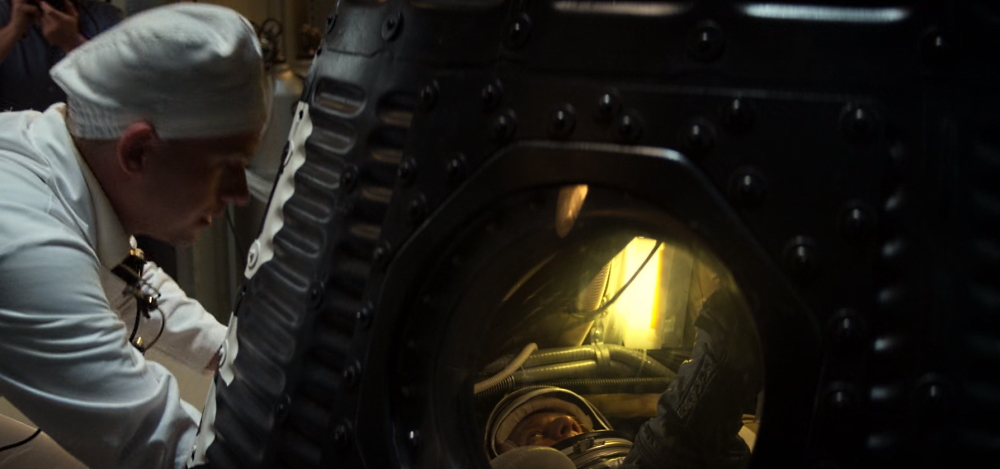
The season finally ends with Shepard's flight, after which he walks gloomy - there is nothing particularly interesting at the top of the pyramid of pilots.
For once, we are shown the friendship between Glenn and Shepard. The joke with the picture was in reality, and even the inscription is almost correct. Only "in this area" has been removed from the show. The soaked spacesuit was also in reality, except that they threw out the joke "Well, now I definitely have a wet back" (an allusion to illegal migrants who swam across the Rio Grande). They turned off only the power supply to the medical sensors, not the entire ship. And during the waiting time, from the ventilation inside the suit, Shepard managed to dry out. The story with the phrase "What a beautiful view" with a closed gray filter porthole was also in reality, but Shepard did not open it due to the fact that in the process the protrusion on the glove was next to the emergency stop button, and Alan did not want to risk it accidentally click. And according to Glenn's memoir, Shepard did not lament,but told about the flight and regretted that it did not last longer.
Trudy Cooper dreamed of getting into the Powder Puff Derby race, nothing is known about the women's squad. She fulfilled her dream, performing in the derby in 1970. But the tender relationship of the spouses Glenn is shown authentically - they were married for 73 years, before John's death. Annie Glenn died in May 2020 from complications of the coronavirus.
Conclusion
In general, despite the very accurate adherence to historical realities and some pretty scenes, I personally found the series to be drawn out, boring and filled with unpleasant characters. Personally, I would highly recommend the 1983 movie and the book.
Paradoxically, so far the best space movie / TV series I've seen in many months is the trashy "Space Force" . In February, the second season of For All Mankind comes out, which I don't expect anything good either.